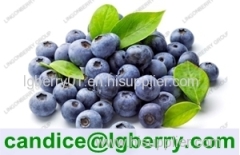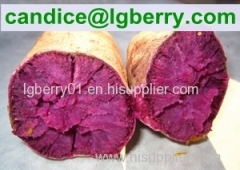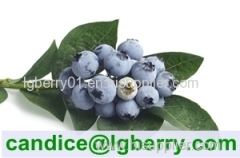
|
DaXingAnLing Lingonberry Boreal Biotech Co.,Ltd.
|
High quality red cabbage extract /anthocyanin
| Place of Origin: | Heilongjiang, China (Mainland) |
|
|
|
| Add to My Favorites | |
| HiSupplier Escrow |
Product Detail
1.English name: red cabbage extract
2.Latin name: Brassica oleracea L.var.capitata L.
3.botanical used part: fruit
High quality red cabbage extract /anthocyanin
Min.Order Quantity: 1 Kilogram/Kilograms
Supply Ability: 10000 Ton/Tons per Year
Port: tianjin shanghai dalian
Payment Terms: L/C,T/T,Western Union
1.English name: red cabbage extract
2.Latin name: Brassica oleracea L.var.capitata L.
3.botanical used part: fruit
4.Specification: anthocyanin 5%~50%
5.appearance :purple fine powder
6.active ingredients:. Anthocyanins( palargonidin)
7.test methods:UV /HPLC
Appearcan for cabbage extract:
Red Cabbage Color power is deep red, liquid is brown purple. It can be dissolved in water & alcohol, acetic acid, propylene glycol solution easily, but not in oil. The color of water solution changes when PH is different. When PH is below 3, the color is purple red, the color is pink red when PH is between 4~6, and the colourity is ideal stability. The solution color becomes blue & green, and is unstable when PH is above 6. The color of solution can't fade under light for a long time, and also has good resistance to high temperature in an acidic medium.
Description for Anthocyanin:
(Anthocyanins ,also anthocyans) are water-soluble vacuolar pigments that may appear red, purple, or blue depending on the pH. ANTHOCYANIN belong to a parent class of molecules called flavonoids synthesized via the phenylpropanoid pathway; pioneer herb ANTHOCYANIN are odorless and nearly flavorless, contributing to taste as a moderately astringent sensation. Anthocyanin occur in all tissues of higher plants, including leaves, stems, roots, flowers, and fruits.
Anthoxanthin are clear, white to yellow counterparts of anthocyanin occurring in plants. Anthocyanin are derivatives of anthocyanidins, which include pendant sugars. ANTHOCYANIN Function In flowers, bright-reds and -purples are adaptive for attracting pollinators. In fruits, the colorful skins also attract the attention of animals, which may eat the fruits and disperse the seeds. In photosynthetic tissues (such as leaves and sometimes stems), anthocyanins have been shown to act as a "sunscreen", protecting cells from high-light damage by absorbing blue-green and ultraviolet light, thereby protecting the tissues from photoinhibition, or high-light stress.
This has been shown to occur in red juvenile leaves, autumn leaves, and broad-leaf evergreen leaves that turn red during the winter. The red coloration of leaves has been proposed to possibly camouflage leaves from herbivores blind to red wavelengths, or signal unpalatability, since anthocyanin synthesis often coincides with synthesis of unpalatable phenolic compounds. In addition to their role as light-attenuators, anthocyanins also act as powerful antioxidants. However, it is not clear whether anthocyanins can significantly contribute to scavenging of free radicals produced through metabolic processes in leaves, since they are located in the vacuole and, thus, spatially separated from metabolic reactive oxygen species.
Some studies have shown hydrogen peroxide produced in other organelles can be neutralized by vacuolar anthocyanin. ANTHOCYANIN Light absorbance The absorbance pattern responsible for the red color of anthocyanins may be complementary to that of green chlorophyll in photosynthetically active tissues such as young Quercus coccifera leaves. It may protect the leaves from attacks by plant eaters that may be attracted by green color. ANTHOCYANIN pH indicator Anthocyanins can be used as pH indicators because their color changes with pH; they are pink in acidic solutions (pH < 7), purple in neutral solutions (pH ~ 7), greenish-yellow in alkaline solutions (pH > 7), and colourless in very alkaline solutions, where the pigment is completely reduced.
Package:
package: 25kgs/carton, 2.5kg/bag, double plastic bag vacuum packing inside, with customizing carton outside.



















